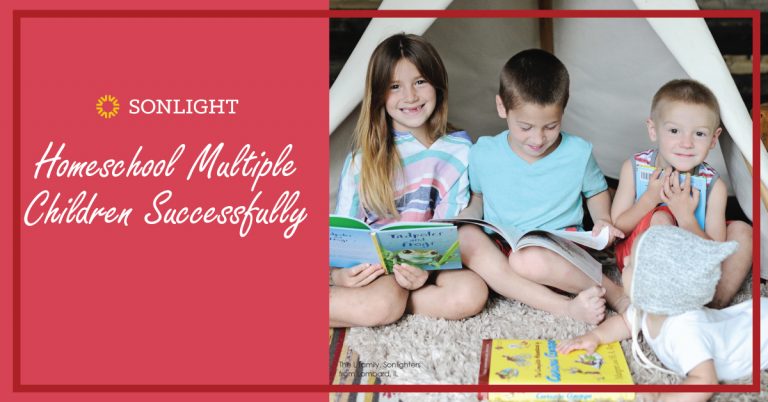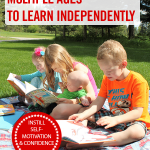
- “Mom, can you read this to me?”
- “Mom, can you help me with this?”
- “Mom, I have a question!”
You probably hear these words from your own children, like I do, many times every school day. I find I am easily frustrated with so many questions bombarding me while I am trying to teach, guide, and instruct all four of my children at once.
Sadly, my frustration leads to curt answers that are not full of grace. I don’t want my children to feel like a nuisance because of my response; I want them to feel they are important and loved.
While it is a good thing to ask questions, I also want my children to understand that their questions need to be asked responsibly. When there is an established order, everyone benefits, and growth happens.
Part of my job as a homeschool parent is to help develop independent learners. I cannot walk around holding my children’s hands, answering their questions every day of their lives. They have to learn, at some point, to think independently so they can thrive in adulthood. (And we parents have to let them, no matter how hard.)
In my experience so far, these three steps have helped with leading my children to learn independently in our homeschool.
1. Establish Clear Boundaries
When I am working with one child on math and another child interrupts with an unnecessary question which I answer, two bad things happen:
- The question interrupts the learning for the one child.
- The child who is asking isn't thinking independently.
Here’s my solution: I establish clear boundaries that when I am working with one child, no other child can interrupt. Instead they must hold their question until I am ready to give them my attention.
This rule establishes order, and offers the child asking the question a chance to problem-solve on their own. I often find that the child with the question will figure out the answer while they are waiting.
2. Give Your Children The Right Tools and Skills
One of the best things my dad taught me was to figure things out on my own. He did not ignore my questions, but he told me where and how to find the answer instead of telling me the answer outright. After equipping me to find the answer, he would send me to investigate on my own. After figuring out the answer, I would go back to him and relay my discovery or ask for further guidance.
My dad's method helped me learn to think independently and become a good problem-solver. I try to model this same parenting style with my children, giving them the road map, teaching them how to use it, and being there to help them explore the answers.
One simple example is to provide reference tools for children such as encyclopedias, a thesaurus, and almanacs. Even when I know the answer, I teach them how to look up the answers to their questions. Not only will they learn a new skill, but they will probably better remember the fact because they had to work for it.
3. Allow Children More Freedom as They Mature
I'm a fan of giving tweens and teens the freedom to work on their own within an allotted time frame. Establish a list of expected assignments or use one of Sonlight’s student guides. But let them choose the pace, the order, and the methods. This freedom teaches time management and work ethic.
It is also good for older children to know up front what both the reward is when they complete their work on time and the consequences if they squander their time. Handing over more control instills self-motivation for higher education and the workforce—and life!
When our children are younger, we do need to help them more and devote more time teaching them one-on-one. But we also have to learn how to let go and let them learn to think for themselves. The transition is not always easy—for parents or for children. But being able to learn independently is a requirement for our children to excel in adulthood.









